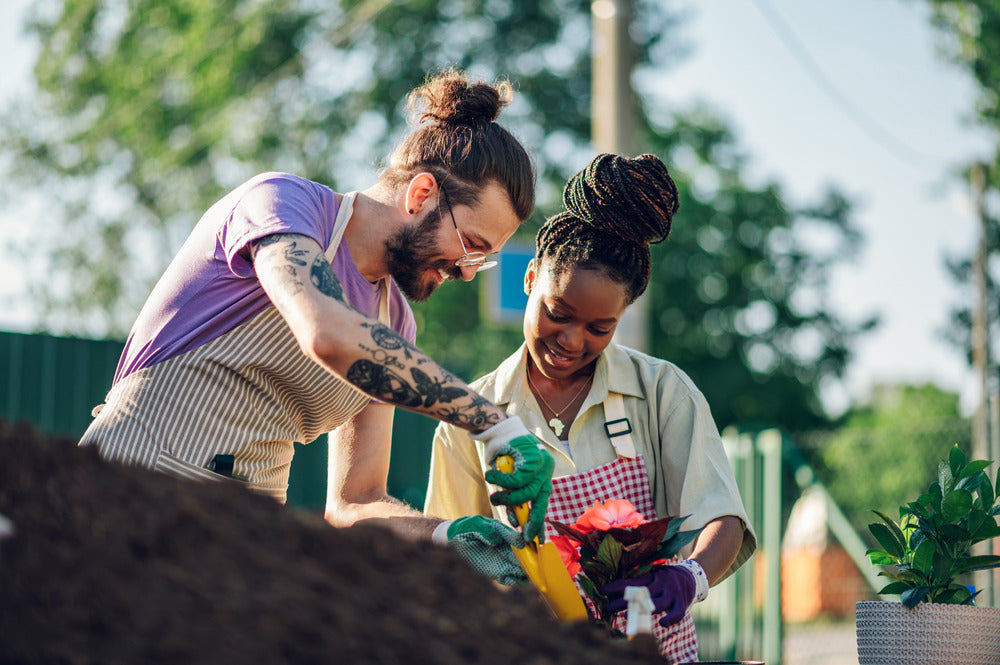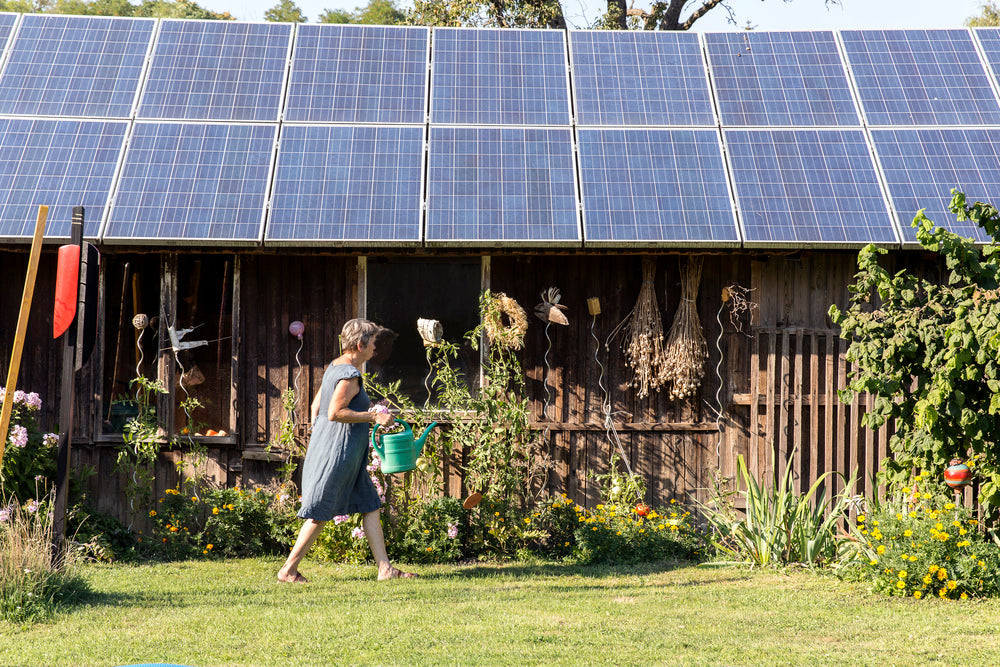Whether you're growing herbs in mason jars or wrangling a full backyard veggie patch, gardening is one of the most rewarding ways to connect with nature. But here’s the plot twist: even gardening can come with its own environmental pitfalls. From plastic seed trays to synthetic fertilizers, it’s easy to accidentally plant some not-so-eco habits along with your tomatoes.
Don’t worry—we’re not here to judge your Miracle-Gro. We’re here to show you how to garden with intention, style, and a low-waste mindset that would make Mother Earth proud. Let’s get dirty (responsibly).

Soil: It’s More Than Just Dirt
Good gardening starts from the ground up—literally. Soil health is everything, and sustainable gardening means feeding your soil, not just your plants. Commercial fertilizers may get quick results, but they often harm beneficial microbes and contribute to runoff pollution.
Instead, opt for compost (more on that juicy topic in Blog #6—stay tuned!). Composting diverts food waste from landfills and turns it into nutrient-rich soil food. You can also add natural amendments like worm castings, leaf mold, or well-aged manure from local farms.
If you’re buying soil or compost, look for OMRI-certified organic brands, or ask your local nursery about sustainable sourcing. Bonus points if you bring your own reusable container to fill up and skip the plastic bag.
Tools of the (Low-Waste) Trade
Most garden tools these days are mass-produced, plastic-heavy, and made to break (rude). But investing in high-quality, long-lasting tools is the low-key hero move of every eco-gardener. Look for hand tools made from wood, stainless steel, or recycled metal—bonus if they’re secondhand or locally made.
Speaking of reusables, here’s where our faves from Marley’s Monsters come in clutch. Wipe your hands (and your sweat!) with Cloth Wipes or clean muddy tools with UNpaper® Towels instead of tossing paper towels into your compost like a chaos gremlin.
And if you’re carrying seeds, tools, or snacks (priorities) into the garden, stash them in a Wet Bag to keep things organized and washable.
Plastic Pots? We Don’t Know Them
You know those black plastic nursery pots that pile up faster than zucchini in July? Yeah, they’re kind of the worst. Many recycling centers don’t accept them, and they often crack after one use.
Instead, reuse what you’ve got. Egg cartons, yogurt cups, even toilet paper rolls make adorable (and compostable!) seed starters. Or level up with biodegradable pots made of coir, peat-free fiber, or newspaper.
Want something cuter? Upcycle tin cans, mason jars, or chipped teacups. Just remember to add drainage holes—no one likes soggy roots.
Water You Waiting For?
Water is a precious resource—especially in drought-prone areas—so watering your garden wisely is key to sustainability. The first step is choosing plants that thrive in your climate. Native species usually need less water, fewer inputs, and help support local pollinators.
You can also:
-
Collect rainwater in a barrel (or a cute vintage bucket if you’re feeling rustic)
-
Water in the early morning or late evening to reduce evaporation
-
Use mulch (like straw, leaves, or wood chips) to retain moisture and suppress weeds
Drip irrigation systems are another great upgrade. They deliver water straight to the roots, where it’s needed most, with way less waste than sprinklers or hoses.

Let’s Talk Organic (But Make It Low-Key)
“Organic” gardening doesn’t have to mean memorizing Latin plant names or brewing compost tea at midnight. At its core, it just means working with nature, not against it. That includes skipping chemical pesticides in favor of natural pest control.
Try companion planting—pairing certain crops together to deter pests and boost growth (marigolds with tomatoes is a classic). Invite the good bugs, like ladybugs and lacewings, by planting pollinator-friendly flowers like lavender, yarrow, or echinacea.
You can also make your own pest spray with water, a drop of castile soap, and a sprinkle of cayenne pepper. Or just pick those aphids off by hand and give your plants a pep talk. Hey, it works for us.
One List to Rule the Yard: Greener Gardening Swaps
Here’s your go-to guide for ditching waste and embracing more sustainable gardening practices. Bookmark it, print it, tattoo it on your watering can—whatever helps it stick:
-
✂️ Swap plastic pots → Reuse household containers or use biodegradable seed starters
-
💧 Swap wasteful watering → Use rain barrels, mulch, and native plants to conserve water
-
🧼 Swap paper towels → Clean up with reusable UNpaper® Towels or Cloth Wipes
-
🧪 Swap chemical fertilizers → Use compost, worm castings, or locally sourced organic inputs
-
🐞 Swap pesticides → Try companion planting and invite beneficial insects into your garden
Small changes = big impact. Your garden (and the bees) will thank you.
Growing Community
Sustainable gardening isn’t just about what’s in your backyard—it’s about growing connection, too. Look into community gardens, plant swaps, or seed libraries in your area. They’re great places to learn, share, and avoid over-buying supplies you only need once a year (we’re looking at you, bulb planter).
Even better? Donate excess harvests to local food banks or set up a produce exchange with neighbors. Sharing the bounty helps reduce food waste and makes gardening more accessible for everyone.
Keep It Scrappy
What do banana peels, coffee grounds, and shredded junk mail have in common? They all belong in your compost, baby. If you’re not composting yet, now’s a great time to start—and don’t worry, we’ve got a beginner-friendly guide in Blog #6: From Scraps to Soil coming soon.
Until then, you can get started by collecting kitchen scraps in a compost crock or container with a lid. (Hint: Wet Bags make excellent temporary holders for peels and grounds until you take them out to the pile!) Just skip the meat, dairy, and oily stuff unless you’re working with a high-heat system.
Dig Deep, Stay Green
Gardening is already a powerful way to reconnect with the Earth. When you add sustainability into the mix, it becomes a full-circle experience—nourishing for your plants, your plate, and the planet.
You don’t need to overhaul everything overnight. Just start with one swap, one seed, one reusable towel. The important thing is that you’re growing something with intention.
So go ahead. Dig in, get messy, and remember: your thumb is already greener than you think.



